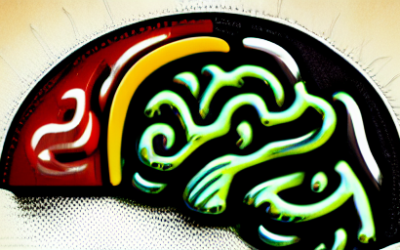Groovy vs Java: both programming languages, but they have some key differences. Groovy is a dynamic language and Java is a static language. Groovy is a scripting language and Java is an object-oriented programming language.
Tech Blog
Tech Insights, Information, and InspirationCase Study | Machine Learning for Spam Filtering
The client began experiencing an increase in the volume of spam through its estimate request form. Utilizing old data, we determined we could go through the clients request history and flag the spam, then use machine learning to train a simple model to classify estimate requests as spam or not spam.
What is the software development life cycle?
The software development life cycle (SDLC) is a process used by software engineers to plan, design, develop, test and deploy software applications. The SDLC is a framework that describes the steps taken during the software development process, from initial concept to final deployment. It is often used as a guide for developers to ensure that all necessary steps are taken and that all deliverables are satisfactory.
Progressive Web Applications
Progressive Web Applications (PWAs) are web applications that use new technologies to provide a mobile app-like experience. They are web-based, but can offer the same features and functionality as traditional mobile apps. PWAs are intended to combine the best of both worlds—the reach of the web and the experience of a native app.
Java vs Python | Old vs New
Java and Python are two of the most popular programming languages in the world. Both are used for a variety of tasks, including web development, software development, gaming, and artificial intelligence.
Pair Programming
Pair programming is a software development technique in which two programmers work together at one computer, with one typing and the other guiding the design and direction of the code. This technique encourages collaboration, problem solving, and communication among team members. It also allows teams to work more efficiently and quickly, because it allows for more experienced programmers to work with less experienced ones and for ideas to be exchanged in real time.
Cloud Based vs Web Based Applications
The main difference between cloud based and web based applications is the way they are hosted. Cloud based applications are hosted on a provider’s server and accessed over the internet, whereas web based applications are hosted on an organization’s own server.
Product Information Management Software
Product Information Management software is a type of software used to store and manage product information. This software helps businesses keep track of product details such as product names, descriptions, images, pricing and availability. It also provides a centralized repository for product-related data. PIM software helps businesses improve their customer experience by providing accurate product information quickly and easily.
Business Intelligence Implementation
Business intelligence (BI) implementation requires organizations to consider a variety of factors. Companies must consider the types of data sources they need to access, the type of analysis they need to perform, and the tools and techniques used to analyze the data. Additionally, organizations must have the right people in place to implement the system and ensure the data is properly managed and interpreted.
JavaScript vs Java
JavaScript and Java are two popular programming languages that are often confused with one another, but they are actually quite different. JavaScript is a scripting language used primarily to create dynamic web pages, while Java is a general-purpose language used to create applications that can run on a variety of platforms.
Get In Touch
UseTech Design, LLC
TROY, MI • BLOOMFIELD HILLS, MI
Call or text +1(734) 367-4100










